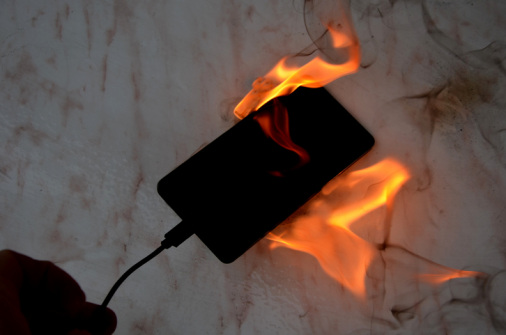Battery safety: high standards, high rewards

Authored by Liberty
Martin Bartnett, Chief Examiner (LM Re US), discusses the increased frequency of fires driven by lithium batteries. He looks at the growing global risk as the variety of products using lithium batteries increases.
In the last ten years, we have seen our world moving away from traditional fossil fuels in search of electric alternatives to combat climate change and decrease carbon footprints. Lithium batteries have been a catalyst in this movement. A variety of the electronic products sold today are powered by lithium batteries, but these products do not come without their fair share of risks. As an industry, we have been at the forefront of identifying these dangers while providing effective solutions to help mitigate them.
It was not long ago that news cycles were dominated by reports of cell phones spontaneously igniting or even exploding. Investigations uncovered that the overheating lithium batteries were at the root of the issue. Further reports began to appear that the lithium batteries were especially prone to combusting on flights. As a result, the Federal Aviation Administration (FAA), the regulatory agency responsible for US aviation travel, issued directives restricting the usage of cell phones and guidance around the storage of lithium batteries on all US commercial aircraft. The steps taken by the FAA helped mitigate the risk factor for the Aviation Insurance Sector.
Around this same time, the use of electric bicycles (e-bikes) began to take off and were favored across cities as people opted for the cost-effective and more environmentally friendly mode of transportation. However, in 2019, 30 fires in New York City were attributed to e-bikes. In 2022, that number rose to 220, with 10 deaths reported as a result of e-bikes between 2021 and 2022. In 2023, New York City saw 267 fires from e-bikes and a total of 18 fatalities.
The common denominator in these fires was lithium batteries. When the batteries become overheated, the ensuing chemical and thermal reaction can be catastrophic. Fire investigators find two reasons for the battery fires. Firstly, the consumers’ lack of knowledge and/ or dismissal of charging protocols and secondly, defective second-rate batteries that have flooded the market from overseas.
The knowledge aspect points to the consumer not understating the nature of charge. The devices should not be left to charge unattended and once fully charged, they should be unplugged. This will prevent overheating and in turn, fires or explosions.
With substandard, defective products, risk mitigation is less clear-cut. First, e-bikes are regulated by the Consumer Product Safety Commission. At present, the CPSC has no standards for manufacturers regarding e-batteries. In 2023, a bill for a Federal Standard was introduced but at present, this bill has yet to be voted on by the House of Representatives and/ or the US Senate. It is worth noting that there are 13 manufacturers in the US which follow the standards set by the Underwriters Laboratories. However, this increases the costs of manufacturing and dissuaded many other manufacturers from subscribing to these safety standards.
Since there is no uniform and enforceable standard, foreign manufacturers can flood the US with substandard batteries due to the “Amazon Loophole” (Clifford 2022) which allows cheap products to be imported without taxes. In the US, the threshold amount is currently $800. By comparison, Mexico’s threshold is $50. The foreign manufacturers of e-bikes can sell their product at a much lower price than their US counterparts since the foreign manufacturers do not incorporate the more expensive safety standards which further compounds issues of liability against Chinese manufacturers, making it difficult for US manufacturers to compete with the foreign competitors.
This problem is not isolated to the US, but rather is a global issue and extends beyond cell phones and e-bikes as lithium batteries are used in a variety of products such as e-cigarettes, landscaping equipment, and many more. At present, scientists and insurers are working hard to mitigate the ramifications of lithium batteries and their disposal, as well as to find and develop products that offer a safe and effective alternative. At LM Re, our underwriters ensure transparent communication with brokers and clients to ensure buildings have the infrastructure for safe charging, storage and necessary safety precautions in place when it comes to e-bikes and lithium batteries. We believe this collaboration and openness is vital to make e-bikes and lithium batteries safe and fit for purpose.
About Liberty Mutual Re
Liberty Mutual Reinsurance is the sole Treaty Reinsurance business for Liberty Mutual Insurance Group (LMIG). Backed by the financial strength and long-term view of LMIG, we provide flexible and wide-ranging solutions that our clients demand; the agility to act quickly; the expertise to craft smart solutions; and a claims service that’s in tune with business’ needs. We have a global network of experts across five underwriting platforms and a comprehensive product range.
Risk is changing and so is insurance. Reinsurance has to be flexible, innovative and tailored to the client’s needs.
We have the energy and innovation of a start-up, combined with an entrepreneurial spirit and the backing of Liberty Mutual Insurance Group, who have been around for over a century. We are committed to bring a world of expertise to every relationship. We are proven collaborative partners and believe in taking a long-term view. We customise our services to suit our clients ever-changing needs.

